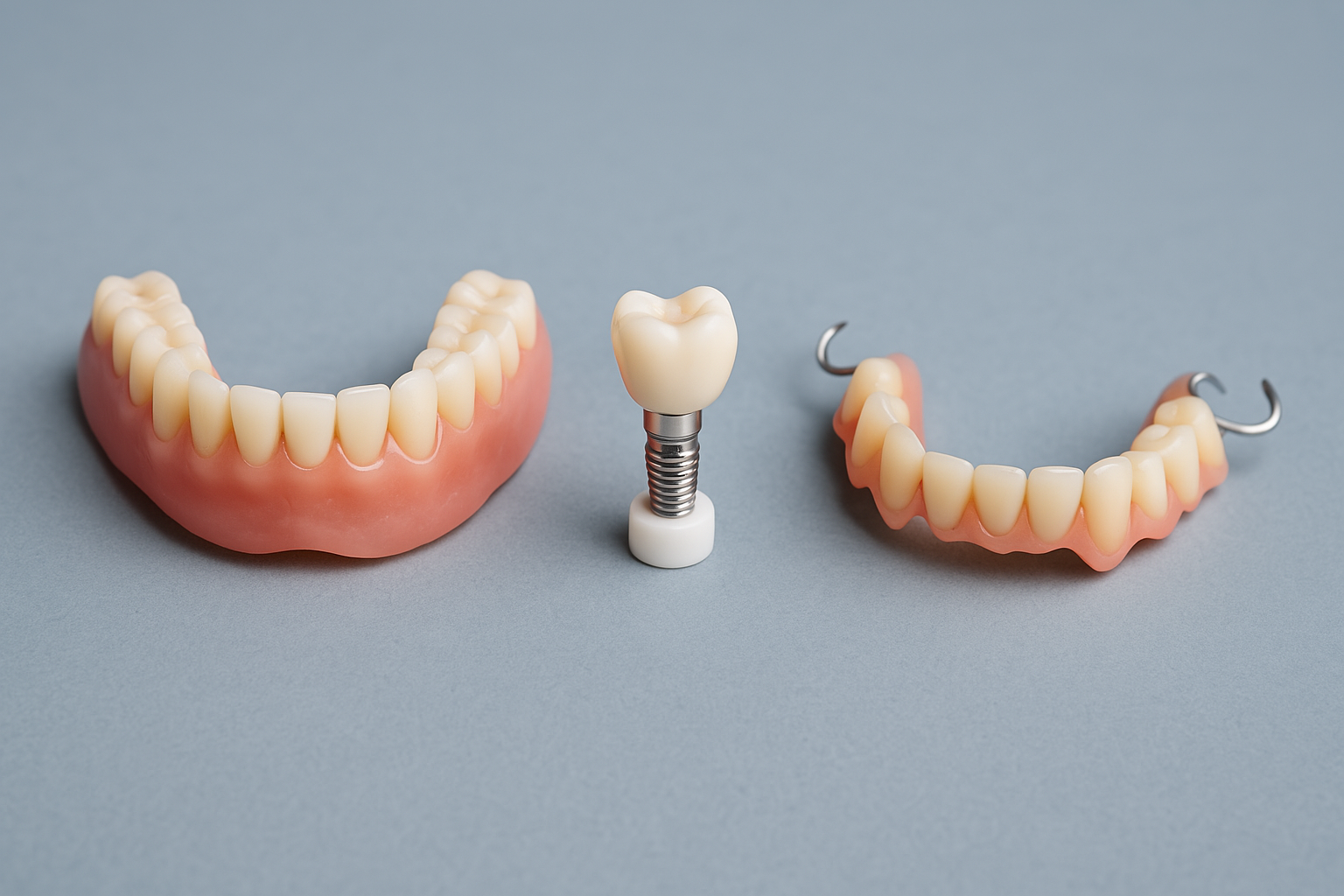Living with missing teeth affects more than just your smile—it impacts your ability to eat comfortably, speak clearly, and maintain overall oral health. For residents of Port St. Lucie and surrounding communities like Stuart, Jensen Beach, and Palm City, understanding the full range of tooth replacement options is essential for making informed decisions about your dental care.
At St. Lucie Center of Cosmetic Dentistry, Dr. Hans Almanzar and our team offer comprehensive solutions for missing teeth, tailored to each patient's unique needs, preferences, and budget. Whether you're missing a single tooth or require full-mouth restoration, we provide personalized treatment plans designed to restore both function and aesthetics.
This definitive guide explores all available tooth replacement options, helping Port St. Lucie residents understand the pros, cons, and ideal applications of each solution.
In This Article:
- Understanding the Impact of Missing Teeth
- Dental Implants: The Gold Standard
- Traditional Dental Bridges
- Removable Partial Dentures
- Complete Dentures for Total Tooth Loss
- Implant-Supported Prosthetics
- Comparison Chart: Finding Your Best Option
- Cost Considerations for Port St. Lucie Patients
- The Treatment Process at St. Lucie Center
- Insurance Coverage and Financing Options
- Frequently Asked Questions
Understanding the Impact of Missing Teeth
Why Tooth Replacement Is Essential for Health and Quality of Life
Missing teeth are more than just an aesthetic concern—they represent a significant oral health challenge that can have cascading effects throughout your body. According to the American Dental Association, even a single missing tooth can trigger a series of complications if left unaddressed.
When a tooth is lost, the surrounding teeth begin to shift into the empty space, leading to misalignment of your bite. The jawbone beneath the missing tooth, no longer stimulated by chewing forces, begins to deteriorate—a process called resorption. This bone loss can alter facial structure over time, creating a prematurely aged appearance.
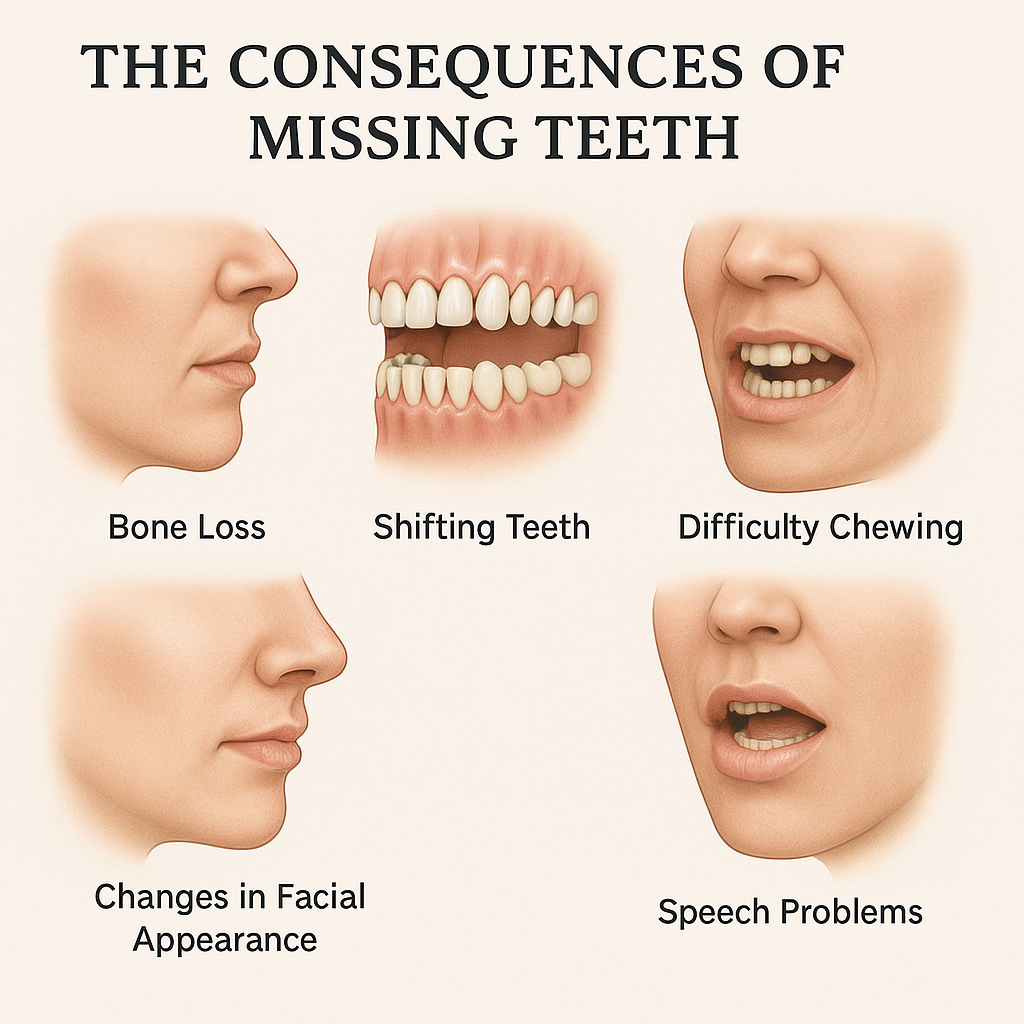
Progressive consequences of untreated tooth loss
Common Consequences of Untreated Tooth Loss
- Shifting of Adjacent Teeth – Creating alignment issues and new gaps
- Bone Loss in the Jaw – Leading to facial structure changes
- Compromised Chewing Ability – Affecting nutrition and digestion
- Speech Difficulties – Particularly with front tooth loss
- Increased Risk of Decay/Gum Disease – Due to harder-to-clean spaces
- Altered Bite Mechanics – Potentially causing jaw pain and TMJ issues
- Premature Facial Aging – From loss of structural support
- Reduced Self-Confidence – Affecting social and professional interactions
- Additional Tooth Loss – Creating a domino effect of dental problems
- Digestive Issues – From inadequate food breakdown
Research published in the International Journal of Dentistry has demonstrated clear links between tooth loss and diminished quality of life, including reduced nutritional intake, social isolation, and even depression in some cases.
For Port St. Lucie residents, timely replacement of missing teeth is crucial for maintaining not just oral health but overall well-being. The good news is that modern dentistry offers multiple effective solutions, each with distinct advantages for different situations.
"The sooner you address a missing tooth, the better your outcomes will be. Many patients don't realize that waiting even a year can result in significant bone loss that may complicate treatment later. During your consultation at St. Lucie Center of Cosmetic Dentistry, we'll discuss how timing affects your specific situation and recommend the optimal replacement timeline."
Dental Implants: The Gold Standard
The Most Complete Tooth Replacement Solution
Dental implants have revolutionized tooth replacement by offering the only solution that addresses both the missing root and crown. These titanium or zirconia posts are surgically placed in the jawbone, where they integrate through a process called osseointegration to create a permanent foundation for replacement teeth.
For Port St. Lucie residents seeking the most natural-looking and functioning tooth replacement, dental implants offer unparalleled benefits in terms of stability, longevity, and bone preservation.
According to the American Academy of Implant Dentistry, properly placed and maintained dental implants have success rates exceeding 95% over a 10-year period, making them the most predictable long-term solution available.
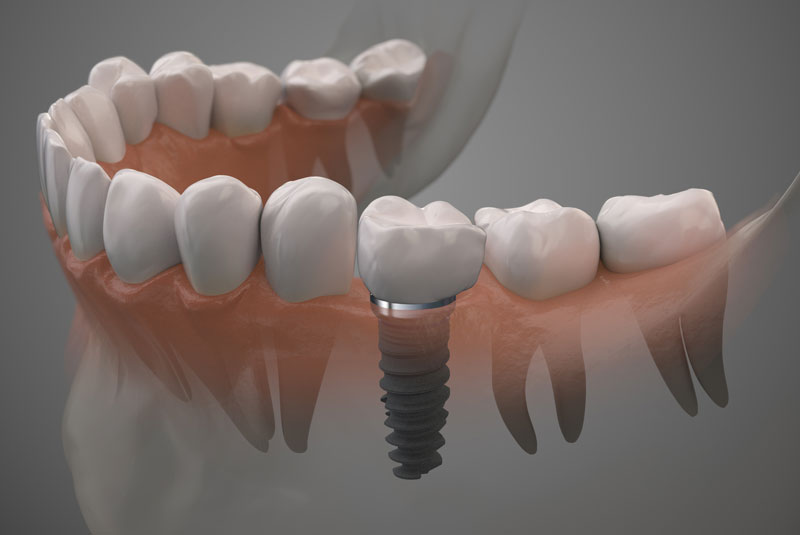
The three components of a dental implant restoration: implant, abutment, and crown
Advantages of Dental Implants
- Bone Preservation – Stimulates and maintains jawbone density
- Standalone Solution – Doesn’t affect adjacent healthy teeth
- Superior Stability – No movement or slippage during eating or speaking
- Natural Appearance – Virtually indistinguishable from natural teeth
- Exceptional Longevity – Can last a lifetime with proper care
- Unrestricted Diet – Allows normal bite force and chewing ability
- Easy Maintenance – Cared for just like natural teeth
- Prevents Facial Collapse – Maintains facial structure and appearance
Considerations for Dental Implants
- Higher Initial Cost – Though often more economical long-term
- Treatment Timeline – Typically 3-6 months from start to finish
- Surgical Procedure – Requires good general and oral health
- Adequate Bone Required – Though grafting can address deficiencies
- Not Ideal for Some Medical Conditions – Such as uncontrolled diabetes
Types of Dental Implant Solutions
Single Tooth Implants
For replacing individual missing teeth, a single implant with a custom crown offers the most natural-looking and functioning solution. Unlike bridges, single implants don't require altering adjacent healthy teeth. According to the Journal of Dental Research, single tooth implants show success rates of over 97% at the 10-year mark.
Implant-Supported Bridges
When several adjacent teeth are missing, implant-supported bridges provide an excellent alternative to traditional bridges. These restorations use strategically placed implants to support multiple replacement teeth, offering superior stability and bone preservation. The International Journal of Dentistry reports that implant bridges can reduce bone loss by up to 75% compared to traditional bridges.
All-on-4® and Full Arch Solutions
For Port St. Lucie residents missing most or all teeth in an arch, revolutionary techniques like All-on-4® can provide full-arch replacement using just four strategically placed implants. This approach offers the stability and function of implants with reduced treatment time and cost compared to individual implants for each tooth.
After years of struggling with partial dentures that never felt secure, I finally decided to get dental implants at St. Lucie Center of Cosmetic Dentistry. The difference is night and day. My implants feel completely natural—I forget they're not my real teeth. I can eat anything I want without worry, and the best part is knowing I'm preventing the bone loss that was beginning to change my facial appearance. Dr. Almanzar and his team made the entire process comfortable and straightforward. It's the best investment I've ever made in my health.
- Catherine D., Port St. Lucie
Traditional Dental Bridges
A Time-Tested Solution for Single or Multiple Missing Teeth
Dental bridges have been a reliable tooth replacement option for decades, offering a fixed solution that doesn't require surgery. A traditional bridge consists of one or more artificial teeth (pontics) anchored by dental crowns placed on the natural teeth adjacent to the gap.
For many Port St. Lucie residents, particularly those seeking a non-surgical option or those with inadequate bone for implants, bridges provide an effective solution with a shorter treatment timeline than implants.
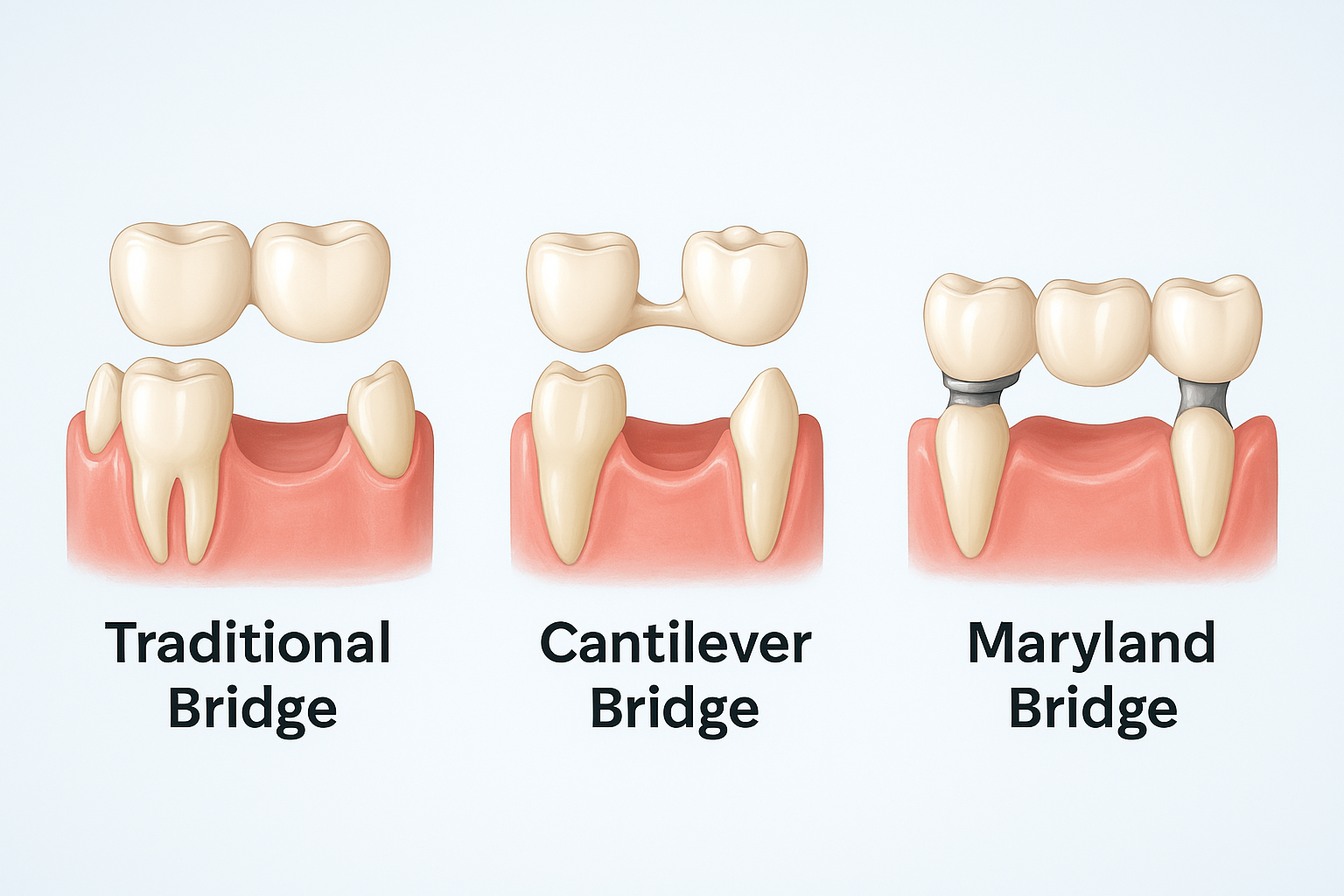
A traditional dental bridge replacing missing teeth
Advantages of Dental Bridges
- Non-Surgical Procedure – No implant surgery required
- Faster Treatment Timeline – Usually completed in 2-3 weeks
- Lower Initial Cost – More affordable upfront than implants
- Fixed Solution – Not removable like partial dentures
- Effective Restoration of Chewing Function – Distributes bite forces across multiple teeth
- Natural Appearance – Modern materials offer excellent aesthetics
- Prevents Tooth Shifting – Maintains the position of adjacent teeth
- Established Technology – Long history of clinical success
Considerations for Dental Bridges
- Requires Healthy Adjacent Teeth – Which must be prepared for crowns
- Doesn’t Prevent Bone Loss – Underlying jawbone will still deteriorate
- Limited Lifespan – Typically 7-15 years before replacement needed
- Risk to Adjacent Teeth – Preparation removes healthy tooth structure
- Specialized Cleaning Required – Must clean under the pontic
- May Feel Less Natural – Than individual implant-supported teeth
Types of Dental Bridges
Traditional Bridges
The most common type, these bridges use crowns on adjacent teeth to support the replacement tooth/teeth. According to the American Dental Association, traditional bridges offer excellent functionality for replacing one to three consecutive missing teeth.
Cantilever Bridges
Used when there's only one adjacent tooth available for support, cantilever bridges anchor the replacement tooth to a single crowned tooth. Research in the Journal of Prosthetic Dentistry indicates these are most successful in areas with lower bite forces, typically the front of the mouth.
Maryland (Resin-Bonded) Bridges
A more conservative option, these bridges use metal or porcelain wings bonded to the backs of adjacent teeth rather than full crowns. The Journal of Clinical and Diagnostic Research notes these are best suited for front teeth where bite forces are lighter and aesthetic demands are higher.
Key Insight: Bridges vs. Implants
While bridges provide an effective immediate solution, research from the Journal of Oral Implantology shows that over a 15-year period, implants often prove more cost-effective due to their longer lifespan and the fact that they don't compromise adjacent teeth. At St. Lucie Center of Cosmetic Dentistry, we help patients weigh short-term convenience against long-term benefits to make the best choice for their specific situation.
Removable Partial Dentures
Versatile Solutions for Multiple Missing Teeth
Removable partial dentures provide a cost-effective solution for replacing multiple missing teeth, especially when those teeth are not adjacent to each other. These prosthetics consist of replacement teeth attached to a gum-colored base, connected by a metal or flexible framework that clips onto remaining natural teeth.
For many Port St. Lucie residents, particularly those on limited budgets or those who cannot undergo implant surgery due to health concerns, partial dentures offer a practical solution that restores both function and appearance.
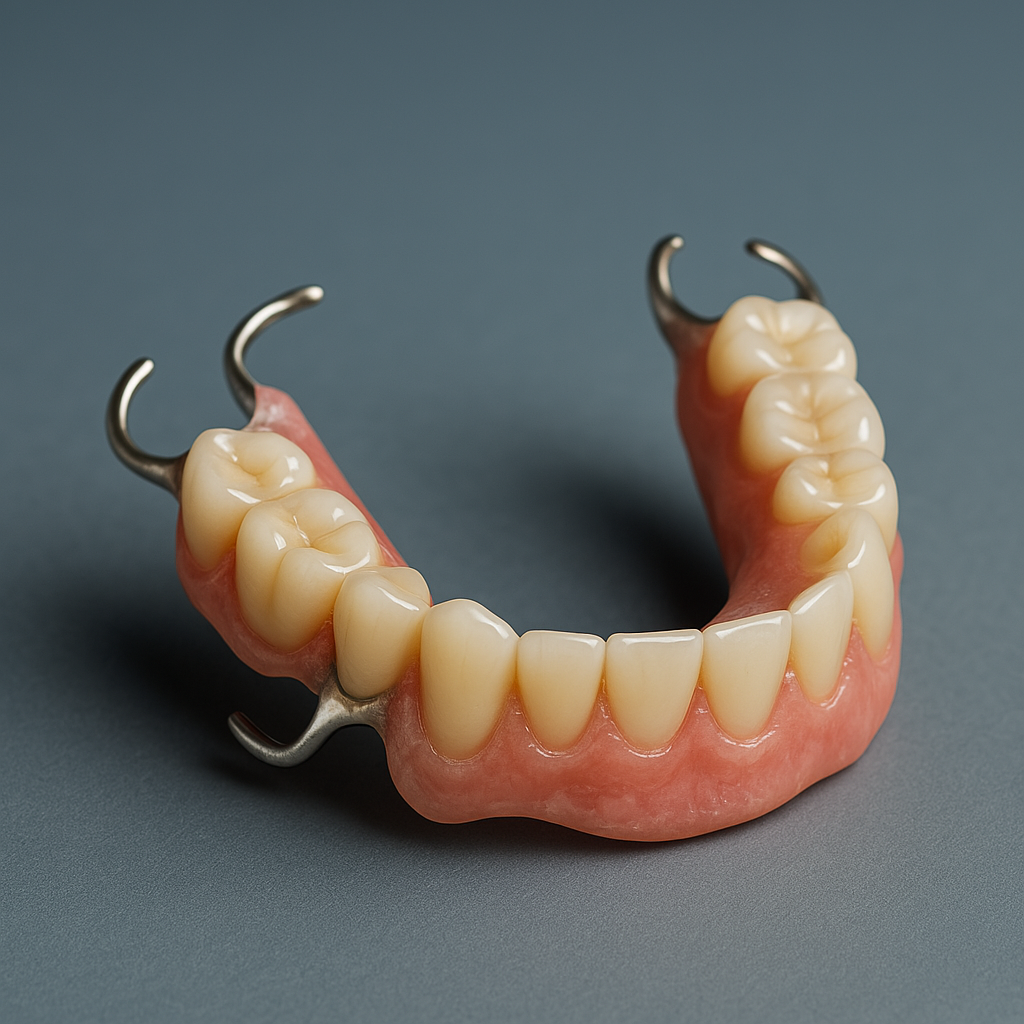
A removable partial denture with precision attachments
Advantages of Partial Dentures
- Cost-Effective – Generally the most affordable option for multiple teeth
- Non-Surgical – No invasive procedures required
- Versatile Design – Can replace teeth in different areas of the arch
- Easily Repairable – Can be modified if additional teeth are lost
- Removable for Cleaning – Allowing thorough oral hygiene
- Quick Fabrication – Typically ready in 2-4 weeks
- Preserves Remaining Teeth – Prevents shifting and super-eruption
- Supports Facial Structures – Helps maintain lip and cheek support
Considerations for Partial Dentures
- Less Stable Than Fixed Options – May move slightly during function
- Reduced Chewing Efficiency – About 30-60% of natural teeth
- Visible Metal Clasps – Though precision attachments can improve aesthetics
- Requires Periodic Adjustment – As the jaw changes over time
- Doesn’t Prevent Bone Loss – May actually accelerate it in some cases
- Shorter Lifespan – Typically 5-7 years before replacement
- May Cause Gum Irritation – Until fully adjusted to wearing
- Regular Maintenance Required – Including professional cleaning
Types of Partial Dentures
Cast Metal Framework Partials
These traditional partials use a strong metal framework with clasps that attach to remaining teeth. According to the American College of Prosthodontists, metal framework partials offer the best combination of strength, stability, and longevity among removable options.
Flexible Partials (Valplast® or Flexite®)
Made from nylon-based flexible materials, these metal-free partials are virtually invisible, with gum-colored clasps that blend with natural tissues. Research in the Journal of Prosthetic Dentistry indicates these are excellent options for patients with metal allergies or those prioritizing aesthetics.
Acrylic Partials (“Flippers”)
Often used as temporary solutions, these lightweight partials are less expensive but also less durable. The American Dental Association notes these are particularly useful as interim prosthetics during implant treatment or while deciding on permanent options.
Precision Attachment Partials
These high-end partials use special connectors instead of visible clasps, offering superior aesthetics and stability. According to the American College of Prosthodontists, these provide the best comfort and appearance among removable options but at a higher cost.
